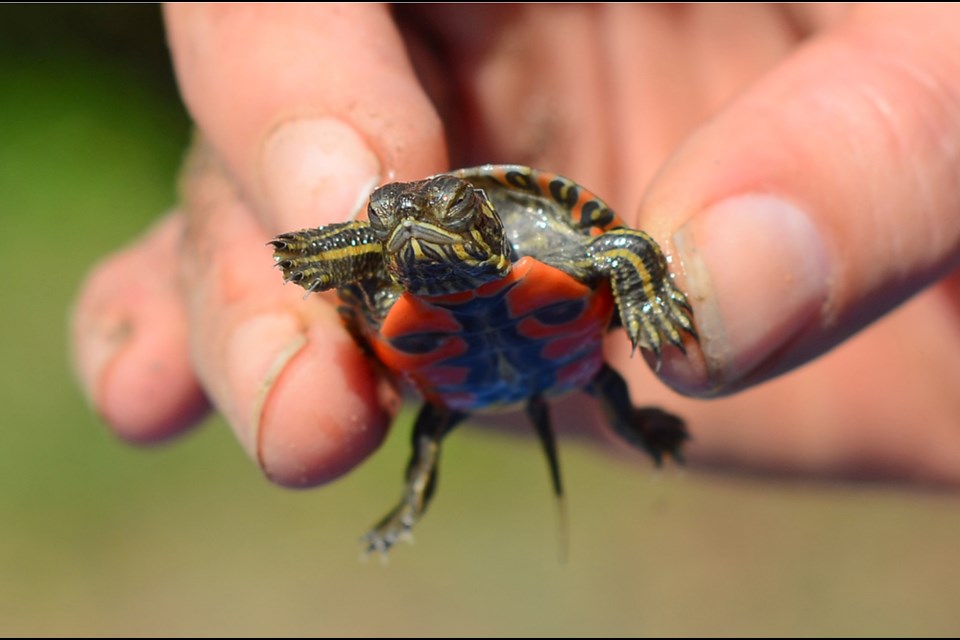For the second time in as many years, dozens of Western painted turtle hatchlings have been uprooted because of a 2014 coal spill into Silver Creek.
In January 2014, a CN train derailed and spilled coal into the creek, which runs into Burnaby Lake, home to one of the largest known B.C. populations of the Western painted turtle.
The first time the hatchlings had to be dug up was when heavy equipment to clean up the spill was deployed from their nesting grounds.
“After the train derailment happened a year ago, we had to dig up this whole beach because they were coming in with their heavy equipment whether there were turtles here or not, just to suck up all the coal that they spilled,” said Deanna MacTavish, a biologist for the Coastal Painted Turtle Project. “It was quite an emergency situation.”
Those hatchlings were reared up at a North Vancouver facility and released back into the lake in the spring.
MacTavish’s group was back at the beach this week, digging up a new generation of tiny turtles.
This time they’re preparing for the beach to be excavated. All the sand is scheduled to be removed in either mid-November or early January and replaced with sand free of contamination.
“Before the heavy machinery rolls in, we’re digging up the entire beach with a bunch of volunteers to make sure we get all the hatchlings out,” MacTavish said.
After one day of work Wednesday, volunteers had unearthed 35 nickel-sized baby turtles.
This batch of hatchlings and any others dug up on a second day of work will be reared up at the same North Vancouver facility or at the Greater Vancouver Zoo and returned to the lake in the spring.
One upside to disturbing the nesting ground twice in two years, according to MacTavish, is that it has given her group a chance to measure how successful the beach is – to determine how many eggs each female is laying and how many hatchlings survive versus dud eggs.
While Western painted turtles sometimes try to nest in different places around Burnaby Lake Park, she said, the beach is the only place biologists have found surviving hatchlings.
“This beach is definitely where a vast majority of the turtles actually come every year to nest,” she said.



